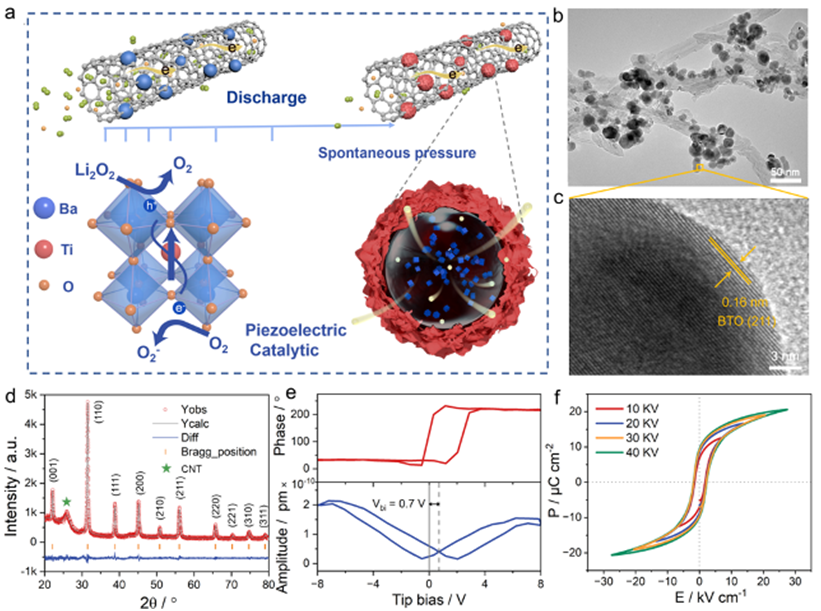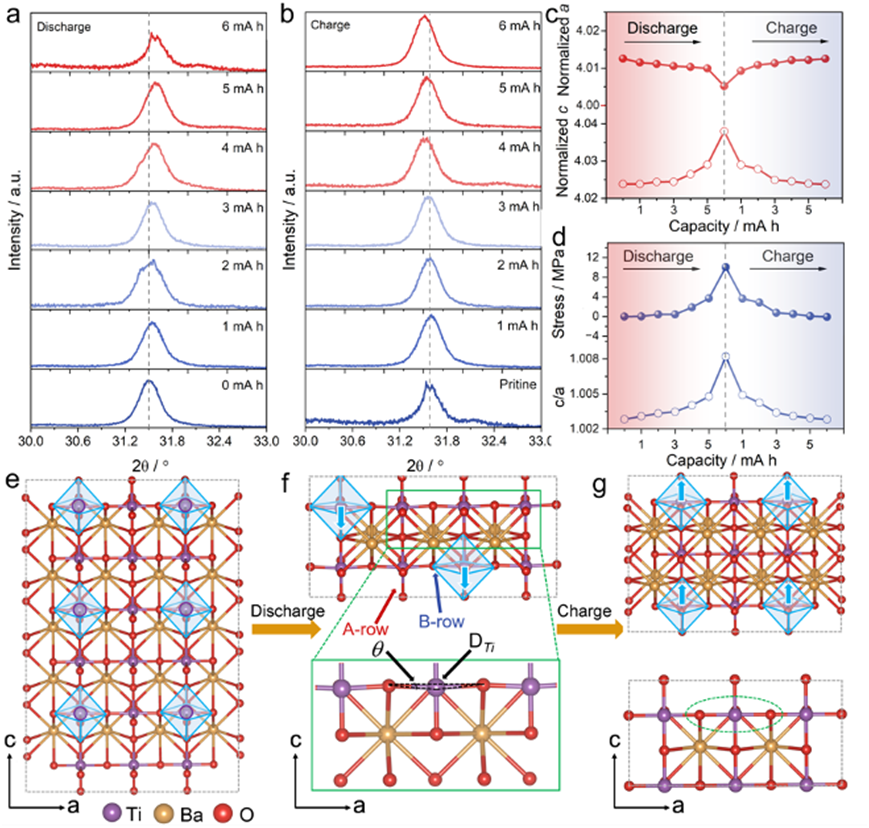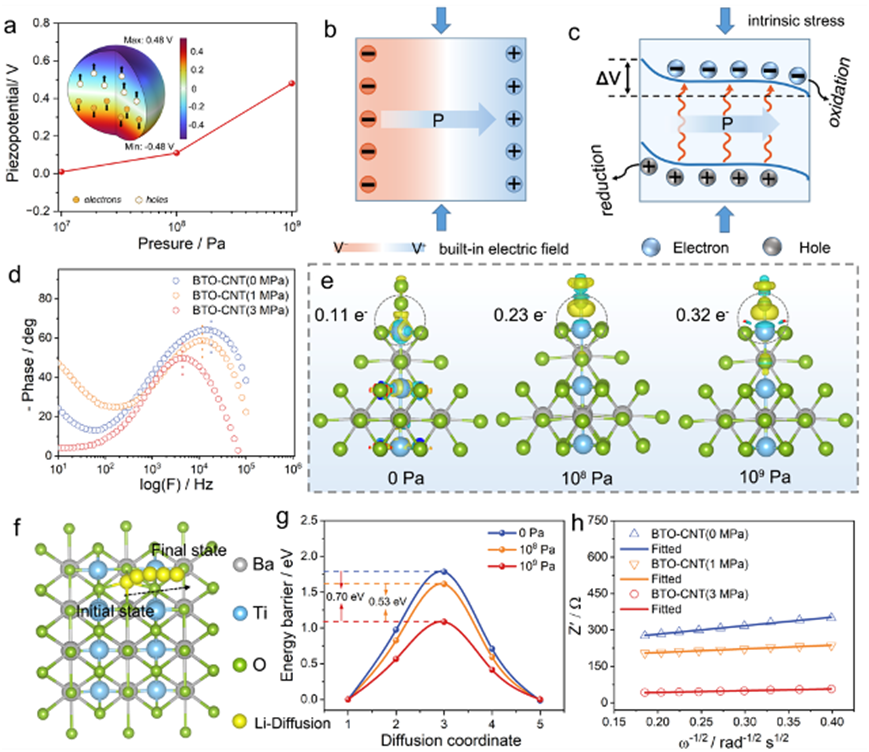
New system of metal air battery assisted by internal stress
2023-10-01 10:00This work introduced a typical piezoelectric material Barium titanate (BaTiO3, BTO) into the air positive electrode of a lithium-air battery to induce an internal electric field through the microscopic internal stress generated by the growth and decomposition of solid discharge products, thereby improving the reaction kinetics and interfacial Li+ transport during the cycle (Figure 1). In situ Raman spectroscopy, X-ray diffraction spectroscopy, finite element simulation and first-principles calculation all reveal the specific regulating effect of battery internal stress on the internal electric field generated by BTO. The relaxation time distribution and in situ electrochemical impedance spectroscopy accurately reveal the intrinsic relationship between the internal stress-induced electric field and electrode dynamics.

The Raman scattering band around 808 cm−1 is gradually enhanced with the discharge process, indicating that the discharge product Li2O2 is rapidly formed on the surface of BTO. The Raman scattering bands at 249 cm−1 and 306 cm−1 are gradually enhanced, indicating that the lattice distortion of BTO is gradually increasing. This is mainly due to the continuous accumulation of discharge products caused by the dynamic increase in the internal stress of the battery to move Ti4+ along a certain crystal axis towards O2−, and the corresponding O2− shows electron displacement polarization, resulting in the spontaneous polarization of the electric field (Figure 2).

The diffraction peak shifts to a higher diffraction Angle during discharge and to a lower diffraction Angle during charging. In the discharge process, the stress curve showed an upward trend, and in the subsequent charging process, the stress curve showed a downward trend, which was consistent with the evolution trend of the growth and decomposition of Li2O2 (Figure 3).

The calculated results are in agreement with the observed experimental phenomenon that the piezoelectric potential of BTO nanoparticles is proportional to the amount of applied pressure. The dynamically varying internal stress during the battery cycle initiates the reaction to a large extent by regulating the band structure and controlling the flow of internal carriers/holes (Figure 4).

The piezoelectric potential induced by the internal stress of the battery can regulate the band structure, drive the separation and transport of carriers, enhance the mass transfer of Li+, effectively reduce the reaction barrier, and significantly improve the performance of the battery, which proves its excellent rate performance (FIG. 5).

The relationship between the internal electric field induced by internal stress and electrode dynamics has been investigated. The intrinsic stress generated by the growth and decomposition of discharge products induces polarization, establishes a dynamic built-in electric field, and enables continuous separation of electrons and holes to opposite surfaces for piezo-catalyzed REDOX reaction, promotes interfacial Li+ transport, and thus improves the reaction kinetics of the battery.
